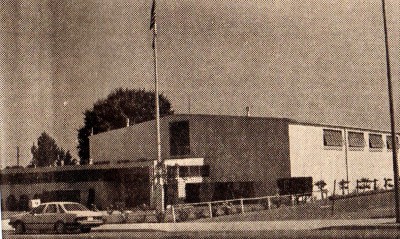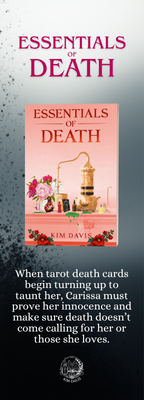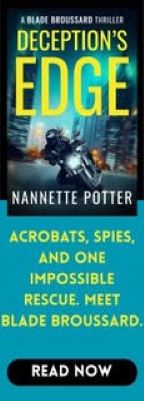by Jim Bulls
Before the outbreak of World War II, G Company of the 185th Infantry, 40th Division of the California Army National Guard was made up primarily of men from Parlier and Reedley. When it was time for drills, Army trucks would pick them up and take them into the Armory in Fresno for drills.
On April 6 1946, the troop carrier with the men of the 185th Infantry sailed under the Golden Gate Bridge, returning home after the war. They were decommissioned, on that day, to return to civilian life and a brand new armory was being built in Reedley. It wasn’t long after the former soldiers return, that the 185th Infantry was moved to the 52nd Division of the California Army National Guard. Then the division name was changed to the 49th Division commemorating the centennial of the California Gold Rush of 1849.
While the armory was being built, G Company met at the Masonic Lodge located above the hardware store. It is said by some of the old timers, that the squad leaders used to take their men on “recon” missions to various outposts selling alcoholic beverages.
Not everything was going well at the Armory building site. Water was seeping into the ground from the Alta Irrigation Company ditches in the area. The ground was so saturated that it could not support the weight of the building. Construction came to a halt. According the Reedley Exponent, the city engineer, Sylvester “Tibb” Smith proposed that caissons be drilled along the ditch and that the water be pumped away from the building site. This evidently worked as the Guard Unit moved into the Armory in the later part of 1949, just in time to celebrate the 100th anniversary of their new division name.
A little aside here. Lt. Carpenter, the former commander of G Company, was honorably discharged prior to the unit’s activation for the war in the Pacific. During the war years, Carpenter anticipated that when the local men returned home following the war, they would want to buy a house and start the baby boom. He was the first builder to attempt a housing tract in Reedley. He built ten “spec” homes on Hemlock Avenue, then located on the outskirts of town.
Carpenter’s own home deserves an honorable mention as a Reedley landmark. It is the big, two story home just south of Immanuel High School on Reed Avenue. The house was moved to Reedley from Traver after the collapse of the wheat market.
In 1947, Howard and Minnie Bulls bought the first of the Carpenter houses on Hemlock. Since my Dad taught at Grant Jr. High School, we passed by the Armory building site every day on the way to school and could watch the progress being made on the building. Dad also got to hear the progress, since his classroom was upstairs, at the end of the hall, closest to the building site.
When the Guard Unit was in session, they would often be double timing by our house on Hemlock, counting cadence and singing “Jody Was There When You Left”, drowning out the radio where I was trying to listen to “Big John and Sparky, and There’s No School Today!”
If the 185th Infantry had remained a part of the 40th Division, the men of G Company would have been activated for the Korean War. As it was, they were activated for State duty during the flooding of the Kings River in the early 1950s. A lot of us can remember the start of Pine Flat Dam being washed away, along with the little village of Piedra and the Olson Avenue bridge at Reedley Beach. At the same time, some demented but energetic arsonist tried to burn down Fresno. Twelve to 17 buildings were set on fire all in about a two hour span. The Guard was pulled in to stand guard duty on gutted and damaged buildings plus patrol the area.
As students at Reedley High, we were all intrigued with the Kennedys. That young, charismatic First Family moved into the White House and introduced the age of “Camelot.” But it was also a time of great seriousness. When it was time for me to sign up for the Draft, a permanent lump seemed to settle in my throat. I was a senior during the Cuban Missile crisis and I really felt the seriousness of Cold War. The blockade stopped Russia at Cuba, but then they turned around and built the Berlin Wall–things were getting crazy. Camelot came crashing down when Kennedy was assassinated, three college students were murdered in Mississippi while registering black voters, and the war in Vietnam was escalating.
In college, I took a passive attitude to the draft and changed my major to extracurricular activities. One day while driving by the Armory, I saw Herman Heubner’s Corvette and Bill Goertzen’s Pontiac setting in the parking lot. I just had to stop and see what was going on. As I walked into the Company Office, Sergeant Presley Bruce (not Elvis) told me to pull up a chair and he would fill me in. He said the Reedley Guard was a third priority unit, one least likely to be activated. There was a drill one weekend a month drill and no other overnight meetings. Summer camp was spent in barracks at Camp Roberts with weekend passes to go to the coast.
Well from a civilian point of view it was a no brainer. If I was drafted there was a 90% chance I would go to Vietnam, or I could join the National Guard and have a 10% chance of going. This is where the story becomes personal for Bill, Herman and me–we all left the Armory as guardsmen. The next day my induction notice came in the mail. That was cutting it close.
Orders were cut for Herman to report to Ft. Polk, LA for basic training. Bill and I waited for Fort Ord to reopen after being closed because of a spinal meningitis epidemic.
It wasn’t until mid-May of 1965 when we reported to the reception center at Fort Ord for basic training—human guinea pigs, you might say, following the meningitis scare. We went in through one door in “civvies” and came out another all in O.D. green. Just like the Captain’s Jeep, we even had a serial number and were now considered United States Government Property.
This was the most intense, rewarding and physically challenging nine weeks of my life I have ever had. This is also the closest to being enslaved or in jail that I care to be. Our drill instructor, Sgt. McInnis, reminded me of Teddy Roosevelt charging up San Juan Hill.
Bill was chosen to be a squad leader and since I was not in his squad, we saw very little of each other as he was off doing corporal duties. About halfway through basic we were called to the basketball courts as we had a surprise guest. It was Herman Heubner, here for his advanced individual training (AIT). He brought news from home and said it wasn’t good. Our local unit had been moved back into the 40th division, and was now Company A, 2nd Battalion, 160th Infantry. Company A was now number one priority, full combat strength and ready to convoy out within 24 hours. The unit now bivouacs three days, every other weekend at Camp Roberts or Hunter Liggett. New subdued patches adorn the uniforms, and there are upgraded weapons in the vault and new vehicles in the motor pool. Herman feared that the 2-160th was heading to some bad places in the future. Since he had to travel from Tehachapi for drills, he was planning on getting a hardship transfer as soon as he got out of AIT.
The PT test was the last hurdle for me to qualify for graduation. I did pretty well, except for the hand grenade toss–my nemesis. The test was only given once a week with only three tries, so you could spend an extra three weeks at Fort. Ord while trying to pass your test. During the first couple weeks I worked in the cabinet shop refinishing furniture for the officer’s quarters. This resulted in one scratched up and tarnished belt buckle. It was noticed by one of the DIs in chow line. Wanting to impress upon the new recruits that he was a bad dude, he barked “Bulls, what did you use on that belt buckle?” Jumping to attention, I shouted out “Sandpaper, Sergeant!” That caught him off guard and he almost choked while trying not to laugh out loud. After regaining his composure, he said softly, “I’ll have to try that sometime.”
I missed passing the test by one point in the second week so I was stuck in Fort Ord again. My mother didn’t receive the answer she wanted when she called trying to find out why her little Jimmy wasn’t home yet, so she played her trump card. Around mid-week of week three, I was summoned to the Captain’s office. When given permission to enter, with a shiny new belt buckle, I found two officers to salute, Captain Elder and Navy Lt. Commander J.H. Graham, Mom’s little brother. I don’t remember our conversation, small talk probably, and the subject never came up in future visits either.
On the day of the final test another surprise awaited me, the DI in charge of my score card was Staff Sgt. Gambino Montoya from Reedley–the brother of my long-time classmate Freddy Montoya. After the test, I was up by two points, but I will never know if my score was influenced by a superior officer, if the score card was graded by a M-I pencil or if I just threw the pineapple far enough.
Anyway I was finally headed home for two weeks of freedom. When I got there I found that the Armory was deserted–everyone was down at the Watts riots. I spent a brief tour there myself, after being delivered by an Army truck. Reedley was the first guard battalion to be issued live ammunition.
My mother was glad to have me home and was excited for me to see her new carpet. I took one look, but just wasn’t too thrilled. I finally confessed that the combination of multi-toned brown and green looked like camouflage to me.
I did see Herman during that time. He was happily transferred to a third priority tank battalion out in the desert, part of the 47th Division. He liked being and in a “nice, safe tank.”
On the way back to Fort Ord to complete my AIT, I planned to get the bunk furthest from the front door and the latrine. As long as I didn’t volunteer for anything and kept a low profile, the next eight weeks would be a piece of cake. The hardest part would be the 20 mile forced hike.
I lucked out being the first to arrive at the company barracks. Everything was going according to plan. I set up my wall and foot lockers, made my bed and sat down to read a book. Pretty soon the other troops started showing up–it seemed they all came from Fort Polk, LA. An hour before dinner, the lieutenant and sergeant showed up for inspection. The sergeant was like a Tasmanian Devil, tearing up beds and wall lockers, and dumping foot lockers. Finding nothing to complain about with my gear, and since the selected squad leader decided to go to NCO school, I was chosen for the replacement. So much for not volunteering and keeping a low profile. But, AIT was much better than basic training, almost like a job with base privileges, weekend passes, having a car and not having to pull KP.
Just before the 20 mile hike, there was to be an Adjutant General inspection of the barracks. The squad leader for the squad across the aisle from mine was upstairs playing cards when one of his men kicked over a butt can (a spent cigarette depository). I asked the guy to clean it up, which he refused to do, and when I ordered him to clean it up he attempted to knock down the second story of the barracks with my head. I don’t know who ended up cleaning the spilt ashes (or the blood), or even how long I was unconscious. I woke up with my parents at my bedside and a medic sewing up my scalp. When I asked how many stitches, the medic just laughed and said he lost count after 40.
I was now the squad leader for the “sick, lame and lazy.” After the regular troops marched off for training, our squad went to work on company chores. Our first detail was painting the infantry blue fence black. When everyone else came back from the forced march dog tired, the sergeant told us to come back after dinner and continue painting the fence until we were relieved—he didn’t want it to seem like we were getting preferential treatment I guess. We painted until dark, and then painted by flashlight. A while later an unmarked Nash Ambassador pulled up, stopped, and the driver hopped out and opened the back door for an officer. I gave him a smart salute, tapping my white bandage head gear and said “Good evening Sir. How may I help you?” He asked if we were painting the fence for disciplinary reasons. “Oh no,” I replied. “We’re sick. lame and lazy; just getting the company spiffy for the new class coming in.” “Well, you’re relieved from duty.” We saluted and he headed off to the captain’s office. The driver said “That was General Gunn, the Adjutant General of Fort Ord and I bet you won’t be painting that fence anymore.”
It’s evidently nice to know people in high places.
When approaching a senior officer it is protocol to salute first, within a designated space. After the fence incident, whenever I met senior officers on the company street they beat me to the salute. It was quite amusing.
I had a conversation later with the guy who cracked my head open. Come to find out he was the Golden Gloves champ in his weight division three years in a row. Our little altercation cost him three days in the brig, a $50 fine for not obeying a superior officer, $900 for physical contact with said NCO resulting in damage to government property (my head), and $90 for running his fist through a $2 latrine door (also government property). We parted with no hard feelings, and I crossed “going a round with the champ” off my bucket list.
1968 was another crazy year. Martin Luther King and Robert Kennedy were assassinated and the war in Vietnam continued to escalate. Following AIT, I was a machine gunner and my friend Bill was a cook in the Reedley 2-160th. President Johnson began to call up the National Guard for deployment–we were packed and ready to convoy out. After sitting around and then trying to catch some sleep on the Armory floor, the captain notified us about 04:00 hours that our unit was not going to be activated. Johnson had decided to fill the infantry with draftees and activate armored units instead. Yes, that third priority unit my friend Herman transferred to was heading out to Vietnam.
In May of that year, the 2-160th from Reedley headed off to the Berkeley riots. When we entered Berkeley, thousands of people lined both sides of the streets. It was eerily quiet. Every man, woman and child held a lighted candle, all the way to People’s Park. The captain ripped down the People’s Park sign and replaced it with one that said Fort Defiance. Everyone thought we were regular army because of our weapons and equipment. They would come down to see us, just like an exhibit in at the zoo.
The night before the big parade, we stood guard duty at an intersection separated from the students by a row of concertina wire and saw horses. I was carrying a M-79 grenade launcher (I didn’t have to worry about throwing them anymore) and one student recognized it, yelling out we had tear gas grenades. In reality I didn’t have any ammo at all. There was a CHP car parked next to my post during the parade and afterwards all you could see of the vehicle was the whip antenna poking out of a mountain of flowers.
We stayed an extra week to be sure that emotions had cooled down. During that time we saw all kinds of people. From the beautiful blond that turned everyone off by sharing her ice cream cone with her dog, to the little old grandma carrying the sign that said “Go home pigs, we don’t need you here!” I understand the University made a parking lot out of People’s Park, but that the only car that ever parked there was the lot attendant’s car.
During the same month, Herman arrived in Vietnam. Within two months he had two tanks blown out from under him ? one reportedly flying 12 feet through the air. He wrote that he was the “old man” of the tank crew, since no one else was old enough to drink. As a tank commander, Sergeant Heubner was on patrol in the Mekong Delta, when his crew was engaged in small arms fire. He was fatally wounded. That was just seven days before his 24th birthday. He earned three Purple Hearts and posthumous Bronze Star.
During my last summer camp, I had a chance to go to Fort Ord and drive by my old AIT Company area. It was still surrounded by a fence painted half infantry blue and half black.
Bill Goertzen and I were honorably discharged March 19, 1971 and the Reedley National Guard Armory closed in 1972, never being activated for federal service. Today it is leased by the Reedley Vietnam Veterans and is available to rent for social events.
Hopefully I will live long enough to finish my book on the history of the local National Guard. If this particular article sparks any interest in a former 49th Division troop reunion, let me know.
I’d like to dedicate this article to Sergeant Herman Heubner, who served God and his country, paying the ultimate sacrifice: July 12, 1944 to July 5, 1969.
For more local and California history articles, including more Reedley history articles by Jim, be sure and check out our Hometown History section.

























Jim,
I grew up and attended school in Reedley, and your father was one of my teachers when I attended Lincoln grammar school. After finishing the 6th grade at Lincoln I attended the 7th grade at Grant. During the summer after the 7th grade there was an earthquake and Grant could not be used. As you know the armory was next to Grant and the armory was used for the 7th & 8th grades, and that’s where I went to school for the 8th grade.
Jim, thanks for a very interesting article. Both of your parents were my teachers. You and I were in several classes together. Herman Huebner’s family and my family attended the same church. Years ago I was so saddend to hear of his death in Vietnam. I still think of him when the subject of that war comes up.